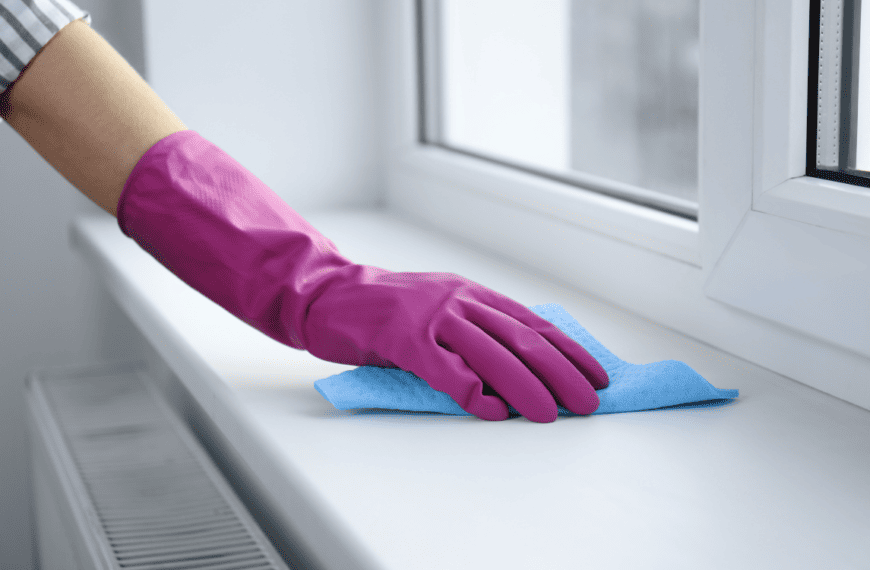Most of us can’t survive the day without waking up with some coffee. We depend on our shot of java to fuel us until lunch, but that morning cup may have more in store than a healthy jolt of caffeine.
Coffee makers are hotbeds for mold growth. An NSF International study revealed that 50% of households had mold and yeast in their coffee machine’s water reservoir, and nearly 1 in 10 had traces of coliform bacteria!
That level of filth may be surprising to coffee lovers everywhere, but it’s not wholly unexpected. The dark, damp conditions offer the prime conditions for mold to grow, and when you neglect to keep the coffee maker clean for even a few days, there’s nothing to stop it from thriving.
Routine cleaning will keep coffee maker mold at bay, but if you’re already seeing the first sign of growth, we’ll detail how to restore your machine and get back to brewing in no time.
How to Clean a Moldy Coffee Maker
Anyone who has had moisture problems or flooding in the home knows that mold only takes about 24–48 hours to grow on a wet surface. Going a weekend without remembering to clean your coffee pot is all you need to have an unfortunate cleaning situation on your hands. Wet coffee grounds in the filter will grow mold without a prompt cleaning, and you may see mold clumps floating in a semi-full carafe or reservoir.
Follow these five steps to give your moldy coffee machine a thorough clean.
1. Rinse the Removable Parts
Remove any coffee maker components that you can, including the coffee pot, drip trays, filter basket, and water reservoir, and give them a thorough rinse. Clean any visible mold with dish soap, hot water, and a sponge.
2. Run White Vinegar Through the Coffee Maker
The acetic acid that makes vinegar an effective household cleaner can work wonders on a moldy machine. Always check the product manual before you clean your coffee maker, as some manufacturers recommend against using vinegar on sensitive parts.
Place the brew basket, reservoir, and carafe back on the coffee maker. You do not need to put in a fresh paper filter.
Fill the coffee pot with half water and half white vinegar. Pour the vinegar solution in the water reservoir, replace the pot on its holder, and put the machine on a brew cycle.
As the brewing process continues, the vinegar solution will flush the contaminated machine. Vinegar is an excellent mold remover and all-around maintenance tool for your coffee maker because it breaks down hard water minerals that can accumulate in the system. Running it through a brew cycle descales the machine, similar to how it can clean a steam iron.
Let the vinegar solution sit in the carafe for about 5–10 minutes. Repeat the process 2–3 more times, letting another half water/half vinegar mixture run through a brewing cycle. Rinse the coffee machine by running it 1–2 additional times with only clean water.
3. Wash the Components with Soapy Water
Remove the water tank, coffee pot, filter basket, reusable filter, and drip trays, to wash with warm water and dish liquid. Scrub all of the surfaces with a clean sponge. Hand dry the pieces or put them on a dish rack to air dry. Ensure they are 100% dry before putting them back on the coffee maker.
4. Wipe Down the Exterior
While the coffee pot and other components are soaking or air drying, take a few seconds to wipe down the outside of the machine with a disinfecting wipe or spray cleaner on a clean cloth.
How to Clean a Coffee Maker With Baking Soda
Baking soda is the other all-natural, all-purpose DIY solution for cleaning around the house, and like vinegar, it makes an excellent coffee maker cleaner!
Follow these steps to clean a coffee maker with baking soda:
- Add one cup of warm water and ¼ cup of baking soda to the water reservoir and mix well
- Run the brewing cycle to let the solution pass through the system
- Repeat the process a couple more times and do a rinsing cycle with plain water
How to Prevent Mold in Coffee Machines
Given how quickly mold grows in coffee makers, you should ideally give yours some quick maintenance every time you use it.
You’ll only need to remove and rinse the coffee basket, pot, and water tank after use when you have an otherwise clean coffee maker. Cleaning the components with soapy water and a scrub sponge every time is preferable, but the primary goal is to clear them and let them dry completely. If you can’t take the reservoir off the machine, ensure it is empty and leave the lid open for lingering water to evaporate.
Whether it’s moldy or not, give the detachable components a basic cleaning with soapy water and use the vinegar method at least once every 2–4 weeks. The best cleaning schedule will depend on your coffee-drinking habits. If you brew coffee daily, you’ll need to clean the coffee maker more often.
Can a Moldy Coffee Machine Make You Sick?
Mold buildup may be obvious once you start drinking coffee from an unclean coffee maker. Coffee beans pack a lot of flavor but not enough to overcome the musty taste of a moldy cup of coffee. And apart from leaving a bad taste in your mouth, coffee mold spores can present a severe health risk.
From the coffee machine to the bathroom, it’s crucial to clean mold no matter where you find it. Mold exposure can cause allergic reactions and irritation, with typical effects including runny noses, sneezing, coughing, trouble breathing, and headaches. By ingesting the mold, you may also experience nausea, upset stomach, and other gastrointestinal problems.
The mold in your coffee machine may also produce mycotoxins, toxic chemicals that have significant adverse effects on people and animals. Coffee beans are one of several foods prone to mycotoxins, and substantial mold growth can lead to eventual exposure. By keeping your coffee maker clean, you’ll enjoy better-tasting coffee and a healthier lifestyle.
Keep Your Home Mold-Free
If you rely on a clean coffee maker to make it through your busy day, you could likely use a helping hand to get some much-needed relief. With Anita’s, you can find highly-rated local cleaning experts to take the stress of chores off your shoulders, giving you more time to focus on what matters. When a moldy coffee maker is keeping you from accomplishing the rest of the house cleaning, request a booking with our team to fill in the gaps!









